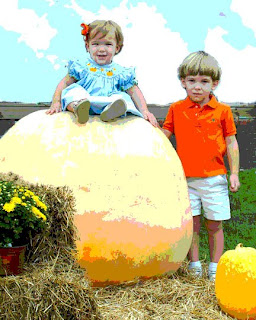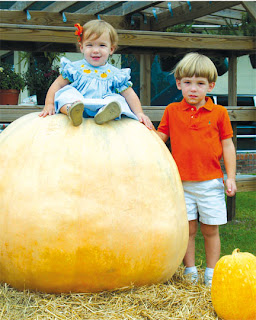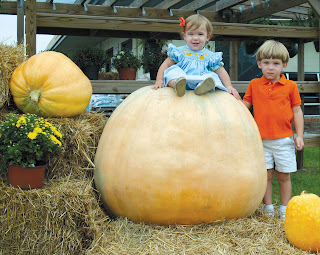



This is a commission piece.
The original photo (bottom photo) is landscape orientation and has a busy background which detracts from the subjects. This commission is to match a cp sketch I did some time ago (the original featured the same child (the boy) as a one and a half year old) so the client wants this piece done in the same style, size and orientation.
I started by simply cropping an 8 x 10 out of the original which gave me the image shown in the second from the bottom photo. Rather bland.
So, using Photoshop, I started experimenting. Photoshop's layers feature gives me complete design freedom- I can add, subtract and move elements around to my heart's content. Anything I do is reversible so I can try any idea that pops into my head.
I used the Rubber Stamp tool to add elements to the composition. In the 8x 10 crop, the image just kind of sits there. I did some cloning to add some interest to the layout: the sky from another photo to give a pleasant but uncluttered background and mums and bales of hay from the left side of the original photo to balance the composition. I did not take the time to refine the composite image - you can see a blue outline around the boy's head - because this is only to suggest a layout.
The final composition is the top photo, and this layout was accepted by the customer.
Photoshop is an invaluable timesaving tool that allows you to experiment with all kinds of changes to the composition, lighting, degree of saturation, and other aspects of your design. It's also great for quickly converting a color photo to black and white to easily see values, and for "posterizing" a photo- which reduces an image to simple bands of color and helps you see subtle color changes (the photo second from the top is posterized). Notice the distinctive bands of color around the bottom of the large pumpkin.
Photoshop is mostly used by professionals in the design and photography industries, and it has a significant learning curve if you wish to take full advantage of all of its features. It is also a fairly expensive program - retails for $586.49 on Amazon. However, there are alternatives: Photoshop Elements (which has about 75% of the features of Photoshop for about 25% of the price), and there are also several free programs similar to Photoshop - they don't have all the bells and whistles - but are quite capable. Two such programs are ArtWeaver and Gimp. Google "free alternates to Photoshop" if you're interested and you'll get a dozen matches. As always, before downloading software make sure it's spyware and virus free. I like to get my downloads from cnet. com - they often have staff and consumer software reviews and their downloads are certified spyware free.
